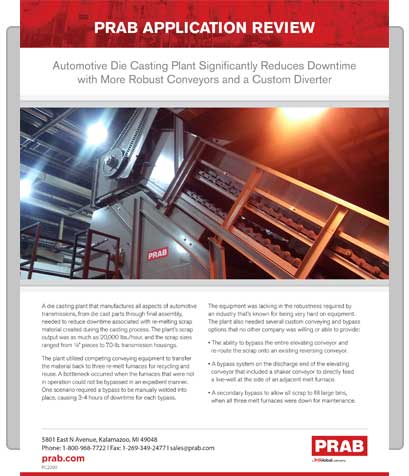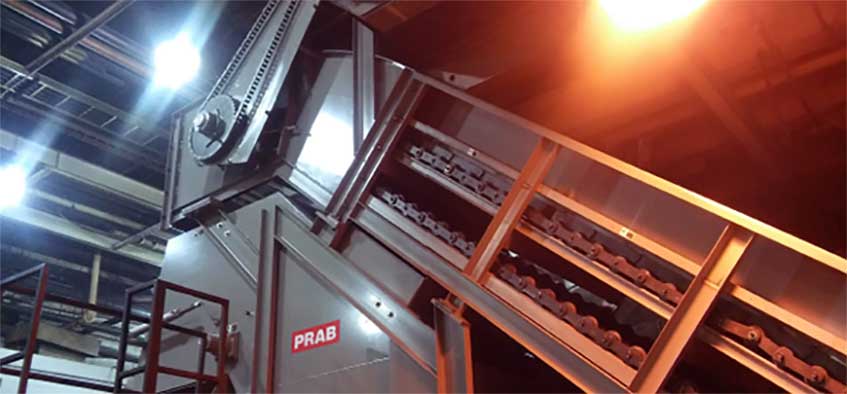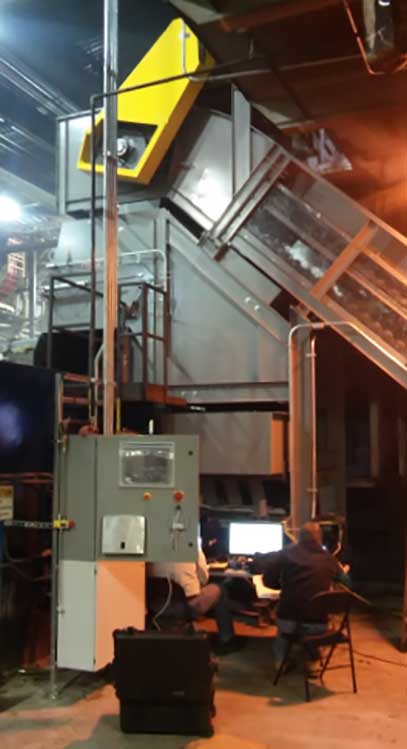
A die casting plant that manufactures all aspects of automotive transmissions, from die cast parts through final assembly, needed to reduce downtime associated with re-melting scrap material created during the casting process. The plant’s scrap output was as much as 20,000 lbs./hour, and the scrap sizes ranged from 1/4” pieces to 70-lb. transmission housings.

The plant utilized competing conveying equipment to transfer the material back to three re-melt furnaces for recycling and reuse. A bottleneck occurred when the furnaces that were not in operation could not be bypassed in an expedient manner. One scenario required a bypass to be manually welded into place, causing 3-4 hours of downtime for each bypass.
The equipment was lacking in the robustness required by an industry that’s known for being very hard on equipment. The plant also needed several custom conveying and bypass options that no other company was willing or able to provide:
PRAB was prepared to deliver all of the requested conveying solutions, and do so within existing space constraints. The customer provided 3D drawings/renderings of the facility (created by a secondary company) where the new system would be installed. PRAB engineers also took physical measurements to ensure accuracy and clear obstructions. The goal was to develop a custom frame/belt design to meet the customer’s strength requirements. Space constraints within the existing pit area, as well as height limitations caused by an overhead trolley system, proved challenging.
In collaboration with the customer, PRAB experts designed and discussed multiple layouts and equipment configurations before reaching a final decision on a custom solution that would fit in the allotted space and offer all of the required bypass options. The new system included a 6”-pitch closed-frame conveyor on a pneumatic rail system that would:
PRAB also designed a custom pneumatic double-actuating bypass chute that allowed discharged material to travel to three different locations:


Other customized components of interest in this PRAB system included:
By combining new equipment with replacements for existing equipment, the system brought multiple benefits to the plant’s operation. The PRAB conveyors were more durable and reliable than the competing units that were previously used to move material, and the system allowed the customer to create three different bypass scenarios depending on which of the three re-melt furnaces was currently in operation.
Another concern the system minimized was related to routine maintenance, which is often overlooked in industrial applications in favor of more pressing plant emergencies. By building automated systems into the equipment that provided real-time monitoring for predictive maintenance, PRAB was able to reduce or eliminate challenges associated with unplanned downtime.